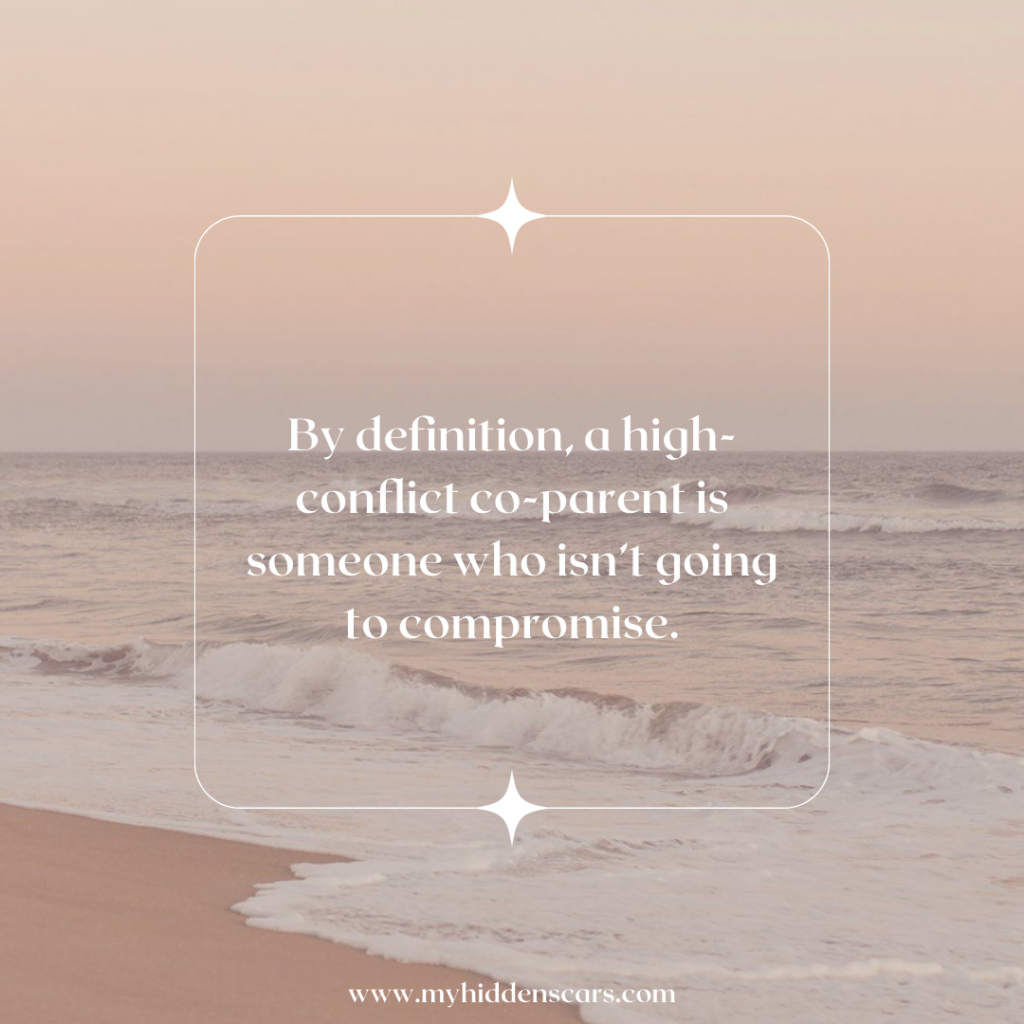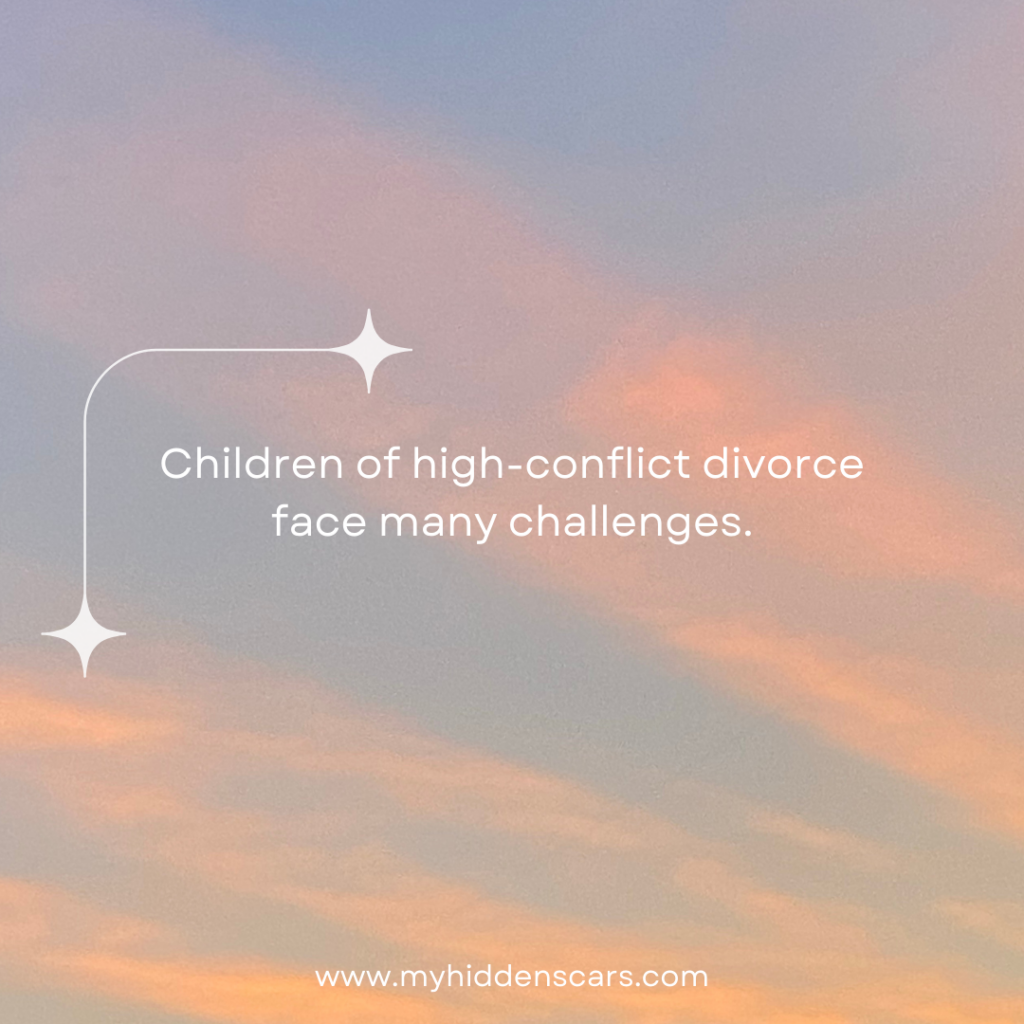We’ve all heard the horror stories of divorces gone wrong. But what if I told you there’s another level of chaos and conflict?
Welcome to the world of high-conflict divorce. It’s a rollercoaster ride of emotions, legal battles, and never-ending drama.
I want to share the signs and characteristics of a high-conflict divorce so you can prepare yourself for the storm ahead.
Hang on because it’s going to be a wild ride.
Key Takeaways
- Intense emotions, frequent arguments, and persistent disagreement between the parties involved characterize a High-Conflict Divorce.
- A High-conflict divorce can be overwhelming and emotionally challenging for women, with constant disagreements and power struggles making it difficult to establish effective co-parenting arrangements.
- Emotional healing helps women recognize and address intense emotions, seek professional help, heal from emotional abuse, and prioritize their overall well-being and the well-being of their children.
- Building a support network is necessary for women going through high-conflict divorces.
- The signs of a high-conflict divorce are emotional abuse, manipulation tactics, chronic communication problems, narcissistic behaviors, and constant legal threats.
What is a High-Conflict Divorce?
A High-Conflict Divorce is characterized by intense emotions, frequent arguments, and a persistent level of disagreement between the parties involved.
Common triggers could include infidelity, financial hardships, or various forms of abuse.
In such divorces, one or both spouses may engage in negative behaviors aimed at derailing the divorce process or inflicting emotional pain on the other party.
This antagonistic nature often prevents the spouses from working cooperatively towards a resolution, making the process more challenging and adversarial.
The hostile atmosphere drastically disrupts and alters the lives of both spouses and their children, extending the emotional and financial strain over a prolonged period.
High-conflict divorces are notably detrimental, with the contentious legal process and the emotional toll marking a significantly distressing chapter for all family members involved.
High-Conflict Divorce
High-conflict divorce can be an incredibly challenging and emotionally draining experience, particularly for women. The process of untangling a marriage filled with conflict and animosity can be overwhelming, leaving people feeling unheard, invalidated, and vulnerable.
It’s important to recognize the unique struggles that women may face in high-conflict divorces and provide them with the support and resources they need to navigate this difficult journey.
When I started my divorce journey, I had no idea what a high-conflict divorce was. I just knew that when I left, I would be in for the fight of not only my life but my children’s lives. I had been told repeatedly that if I ever left him, he would make sure I had nothing, including the children.

High-Conflict Divorce for Women
Sometimes, women going through high-conflict divorces face unique challenges and require specific support.
In high-conflict divorces, co-parenting challenges can be tough for women. They often have to navigate constant disagreements and power struggles with their ex-partners, making it challenging to establish practical co-parenting arrangements.
The disagreements and power struggles are probably among the most challenging parts of a high-conflict divorce. I know I want to be happy and raise my children to be happy, healthy people, but constantly arguing over every little thing takes a toll on your mental and emotional health.
Emotional healing is important for women going through high-conflict divorces. They may experience intense emotions such as anger, sadness, and betrayal, impacting their overall well-being.
Financial implications are another concern. Women may face financial instability due to legal fees, loss of income, and the division of assets. Many women have spent years raising their children or working in another field to make themselves more available to their families. This makes it harder to reenter the workforce and provide for their children. Seeking professional help, such as therapy or counseling, can be beneficial in managing these challenges.
Building a support network is important. Surrounding yourself with understanding and empathetic friends, family, or support groups can provide emotional support during this difficult time.
How to Recognize a High-Conflict Divorce?
When going through a divorce, knowing the signs that help you recognize a high-conflict situation is important. Recognizing emotional abuse, chronic communication problems, understanding narcissistic behaviors, and constant legal threats are all key points to consider.
Recognizing Emotional Abuse
Look closely at your partner’s behavior for signs of emotional abuse, and determine if you are heading towards a high-conflict divorce. Emotional abuse can be subtle and insidious, leaving lasting scars on your mental and emotional well-being.
Recognizing the signs of manipulation, understanding emotional manipulation tactics, and being aware of gaslighting techniques are essential to protect yourself from further damage. It is important to remember that emotional abuse affects us and significantly impacts your children.
Seeing their parents engage in high-conflict behaviors can negatively affect their development and overall well-being. There is hope for healing from emotional abuse. By seeking support, establishing boundaries, and prioritizing self-care, we can free ourselves from the cycle of abuse and rebuild our lives.
I spent 20 years with my ex-husband, and while I often suspected that I had or was being abused, he was always able to explain it away. Until I found a trauma-informed therapist, I had no idea what I had been dealing with. She shared with me what gaslighting was, how abuse can be more than physical and all the different signs of what emotional abuse looked and sounded like.
| Signs of Manipulation | Emotional Manipulation Tactics | Gaslighting Techniques |
| Constant Criticism | Playing the Victim | Denying Reality |
| Isolation | Guilt Tripping | Blaming |
| Controlling Behavior | Invalidating Feelings | Minimizing |
Chronic Communication Problems
Discovering constant communication problems is important in figuring out if you are headed toward a high-conflict divorce. If you see these signs, it’s necessary to take action to prevent further damage to yourself and your children.

Here are some key factors to consider:
- Parenting challenges: Difficulty in making joint decisions regarding your children’s upbringing and conflicting parenting styles can lead to constant arguments and tension.
- Co-parenting strategies: Lack of effective communication and cooperation in co-parenting can escalate conflicts and make it harder to reach agreements.
- Impact on children: Chronic communication problems can hurt your children’s well-being, causing emotional distress and affecting their relationships.
- Emotional toll: Constant arguments and misunderstandings can affect mental and emotional health, increasing stress and anxiety.
If you find yourself experiencing these ongoing communication problems, seeking professional help, such as a divorce coach, can help you find effective strategies to improve communication, reduce conflict, and create a healthier environment for yourself and your children.

Understanding Narcissistic Behaviors
Recognizing narcissistic behaviors is important in knowing if you will likely face a high-conflict divorce. Understanding these behaviors can help you navigate the challenges that may arise and take the necessary steps to protect yourself.
While I had questioned my marriage for several years before I left, I had no idea that there was even such a thing as a narcissistic abuse. heck I didn’t even know what true narcissism was. As I learned about narcissism and narcissistic abuse, it explained so much to me. It made me realize why our divorce was so challenging, but honestly, I had no idea how to navigate through this other than to learn and understand more about his behaviors.
Narcissists often use manipulative and gaslighting techniques to control and manipulate their partners. They may undermine your self-esteem and make you question your reality. This has likely happened during your marriage, but you didn’t see it. Learning about these techniques will help while going through your high-conflict divorce.
Co-parenting with a narcissistic ex-spouse can be particularly challenging, as they may continue to exhibit abusive behaviors and put their own needs above those of the children.
Healing from narcissistic abuse requires time, self-care, and seeking support from professionals and loved ones. Setting boundaries is essential in protecting ourselves and creating a healthier post-divorce dynamic.
Constant Legal Threats
One of the key indicators that a high-conflict divorce may be coming is if there are constant legal threats involved in the process. When legal threats become common, it can create a toxic and hostile environment that further complicates the already difficult situation. Here are some signs to look out for:
- Seeking legal advice: If one or both parties constantly seek legal advice, it may indicate a potential high-conflict divorce. This could mean that they’re preparing for a legal battle rather than trying to find an amicable resolution.
- Filing restraining orders: Constant threats of filing restraining orders can be a red flag. It suggests a lack of trust and heightened tension, which can escalate the conflict.
- Custody battles: When the focus shifts from the children’s best interests to a battle for custody, it can indicate a high-conflict divorce. This often involves each party trying to prove themselves as the better parent, which can further strain the relationship.
- Financial implications: Constant threats regarding financial matters, such as hiding assets or threatening to leave the other party financially destitute, can escalate the conflict and make the divorce more contentious.
Dealing with constant legal threats can take a significant emotional toll on both parties involved. It’s important to seek support from professionals, such as therapists or divorce coaches, who can provide guidance and help navigate the complexities of a high-conflict divorce.
Frequently Asked Questions
What Are Some Common Signs of a High-Conflict Divorce?
Coping mechanisms, warning signs, communication breakdown, legal implications, and co-parenting challenges are common in a high-conflict divorce.
How Can I Prepare Myself Emotionally for a High-Conflict Divorce?
When facing the challenges of a high-conflict divorce, you can prepare yourself emotionally by developing coping mechanisms, seeking emotional support, practicing self-care strategies, seeking therapy, and building a solid support network.
Are There Any Specific Strategies or Techniques That Can Help Me Navigate a High-Conflict Divorce?
There are conflict resolution techniques, effective communication strategies, co-parenting challenges, legal considerations, and seeking support and counseling. These can help navigate a high-conflict divorce and ensure a smoother process for everyone involved.

What Are Some Potential Long-Term Consequences of a High-Conflict Divorce on Children Involved?
Potential long-term consequences of high-conflict divorce on children include emotional trauma, academic struggles, relationship difficulties, increased risk of mental health issues, and long-term effects on future relationships. It’s important to address these challenges and provide support.
Is Mediation or Alternative Dispute Resolution a Viable Option for High-Conflict Divorces?
Mediation and alternative dispute resolution are options for resolving high-conflict divorces, but they don’t always work out how you hope they would. Their success lies in the benefits they provide, such as effective resolution techniques and alternative dispute strategies.
Conclusion
High-conflict divorces can be emotionally and mentally draining for all parties involved. By recognizing the signs and seeking support, it’s possible to navigate through this challenging process.
Many will argue that it’s impossible to find common ground in such situations, remember that putting the well-being of children first can raise a sense of empathy and compassion, leading to more constructive resolutions. Working with professionals such as a high-conflict divorce coach can help.
Remember, you aren’t alone, and there’s help available to guide you through this difficult time.


